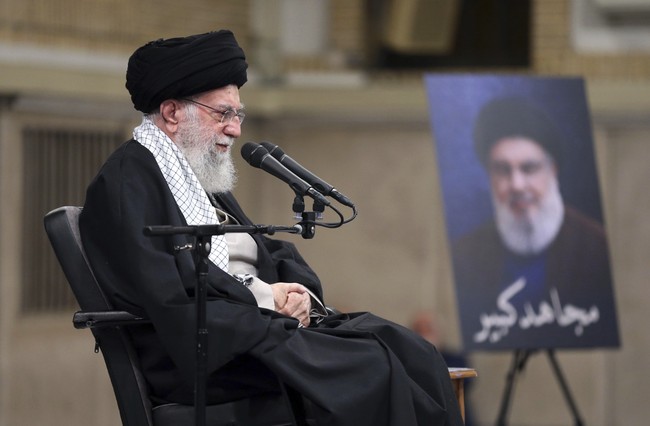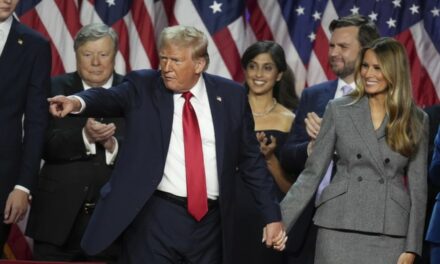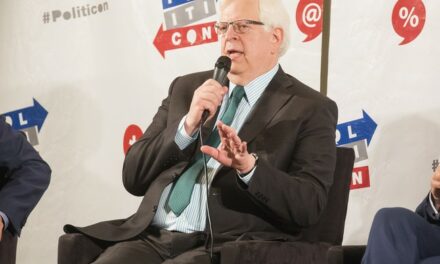We support our Publishers and Content Creators. You can view this story on their website by CLICKING HERE.

Iran International, a Persian-language international media outlet with ties to Iranian regime opponents, is reporting that Iran’s Assembly of Experts, the only body empowered to appoint or dismiss a supreme leader, has named Mojtaba Khamenei, the second son of current leader Ayatollah Ali Khamenei, as his successor.
Advertisement
The outlet also reports that Mojtaba Khamenei may assume the office of supreme leader before his father dies. It’s no secret that the 85-year-old Ali Khamenei is in poor health. But the meeting of the Assembly of Experts was called suddenly and with no warning by Khamenei. The 60-member body was instructed to decide on the succession immediately under strict confidentiality.
There was reportedly little opposition to Mojtaba Khamenei’s elevation. The second son had been assuming a higher profile in the last two years. “Mojtaba has been groomed for leadership, taking on a more active and central role in decision-making related to the Iranian regime.,” YNet News reported.
Why Mojtaba? Iran is perhaps the most factionalized major country in the world. This makes it nearly impossible to govern. The factions agree on very little except the supreme leader must be weak and malleable.
Khamenei was able to rule because of his alliance with the Revolutionary Guard and his purging of Khomenei loyalists. His gradual assimilation of enormous wealth — he’s worth north of $100 billion — has allowed him to buy the loyalty of important factions like the Guards and the National Iran Oil Company (NIOC).
The Assembly of Experts made up of leading clerics and jurists, sees Mojtaba as someone who can be controlled and perhaps manipulated.
Advertisement
Khamenei is 85 years old. He has had a public bout with cancer and is partially paralyzed from a 1981 assassination attempt. Rumors abound about other health crises. While Khamenei’s father, Sayyid Javad Khamenei, lived to be 90, the supreme leader is clearly in the twilight of his life. Although reports that he is comatose are false—he appeared on Iranian television alongside his ambassador to Lebanon—succession scenarios are still an Iranian parlor game.
There has been only one succession in Islamic Republic history: On June 3, 1989, Grand Ayatollah Ruhollah Khomeini, the Islamic Republic’s founder, died at age 86. Khomeini had charisma and religious credentials superior to Khamenei’s. Prior to his death, he designated Khamenei as his successor, not because of who Khamenei was but rather who he was not: He was not a factional head, nor was he strong. In ayatollah circles, his religious credentials were subpar. In short, he was everything faction heads wanted in a compromise candidate, weak and colorless.
The Assembly also chooses presidential candidates. But the presidency is a weak office. The business of governing in Iran is not where the power is. It’s in the guns of the Revolutionary Guards and the religious fanaticism of the major players in the Assembly of Experts.
Advertisement
The Office of the Supreme Leader under Khamenei, though, was not the only institution to build itself an independent power base. The Islamic Revolutionary Guard Corps (IRGC) grew prominent during the 1980-88 Iran-Iraq War and did not want to return to the barracks when Khomeini agreed to a ceasefire. Instead, the IRGC entered the civilian economy. Thirty-five years later, its conglomerate controls up to 40 percent of the Iranian economy.
Mojtaba does not have the religious chops to rule. He’s a minor ayatollah who has never led a major mosque. Hence, the hereditary succession. The Iranian street will almost certainly object to this undemocratic, corrupt way to acquire a new supreme leader. If and when Mojtaba is elevated, the fireworks are likely to begin.

 Conservative
Conservative  Search
Search Trending
Trending Current News
Current News 







